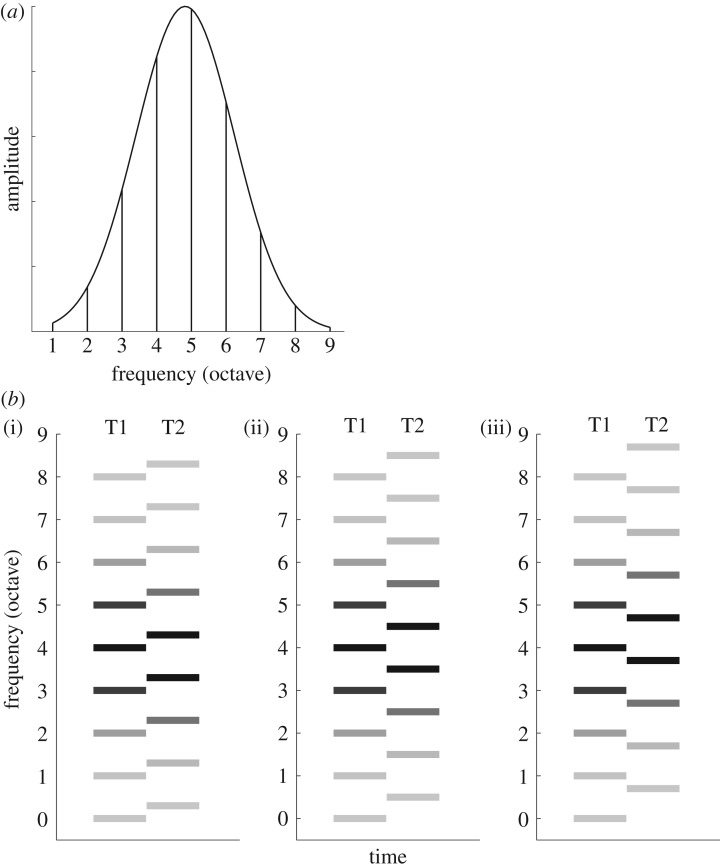Figure 1.
Illustration of the ambiguous and non-ambiguous stimuli. (a) Shepard tones were generated by adding octave-related pure tones, weighted by a bell-shaped amplitude envelope. (b) Pairs of Shepard tones, T1 and T2, were used in the experiment. The panels show frequency intervals of 3 st (i), 6 st (ii) and 9 st (iii) between T1 and T2. When reporting the pitch shift between T1 and T2, participants tend to choose the shortest log-frequency distance: ‘up’ for 3 st and ‘down’ for 9 st. For 6 st, there is no shortest log-frequency distance. The stimulus is ambiguous and judgements tend to be equally split between ‘up’ and ‘down’.

